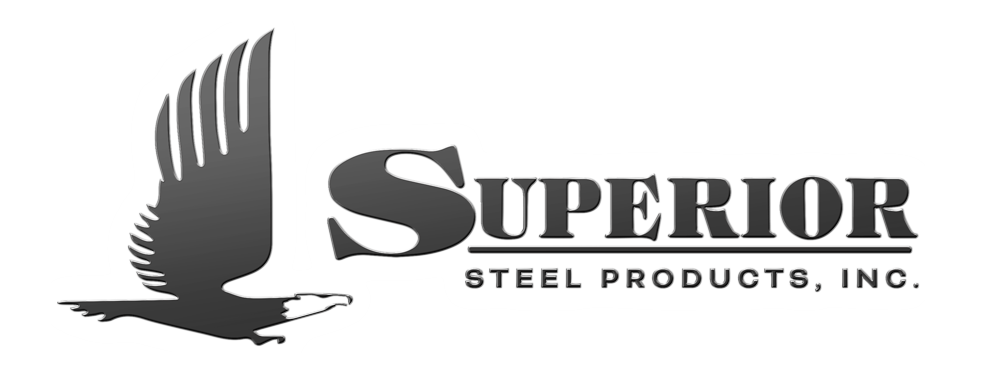Code Specs
We manufacture all forms of bulk storage and transportation tanks and vessels to exacting specifications, including DOT 406, 407 and 412 tanks, skid tanks, single wall and double wall, horizontal and vertical storage tanks, insulated tanks, dike tanks, pressure vessels and nurse tanks from carbon steel, stainless steel or aluminum and much more.
Types of Transport Tanks We Design and Fabricate
API 650 standard covers adequate safety and reasonable economy for tanks used in the storage of petroleum, petroleum products and other liquid products. It establishes minimum requirements for material, design, fabrication, erection, and testing for vertical, cylindrical, above ground, closed- and open-top welded storage tanks for internal pressures approximating atmospheric pressure. A higher internal pressure is permitted when additional requirements are met. This Standard applies only to tanks whose entire bottom is uniformly supported and to tanks in non-refrigerated service that have a maximum design temperature of 93°C (200°F).
This standard is not based on set tank sizes, nor does it cover storage tanks that are being erected in areas subject to more stringent regulations than what are included in this standard. API 650 is intended to help purchasers and manufacturers in ordering, fabricating and erecting tanks based on whatever size tank may best meet their needs. It is not intended to prohibit purchasing or fabricating tanks that meet specifications other than those contained in this standard.
Contact us today to learn more about our products and how we can help you with your specific needs.
This specification is designed to provide the oil production industry with tanks of adequate safety and reasonable economy for use in the storage of crude petroleum and other commonly stored and handled liquids. It covers material, design, fabrication and testing requirements for shop-fabricated vertical, cylindrical, above ground, closed top, welded steel storage tanks in various standard sizes and capacities for internal pressures approximately atmospheric.
Contact us today to learn more about our products and how we can help you with your specific needs.
This Division of Section VIII provides requirements applicable to the design, fabrication, inspection, testing, and certification of pressure vessels operating at either internal or external pressures exceeding 15 psig.
Such pressure vessels may be fired or unfired. Specific requirements apply to several classes of material used in pressure vessel construction, and also to fabrication methods such as welding, forging and brazing.
It contains mandatory and non-mandatory appendices detailing supplementary design criteria, nondestructive examination and inspection acceptance standards. Rules pertaining to the use of the U, UM and UV Code symbol stamps are also included.
Contact us today to learn more about our products and how we can help you with your specific needs.
The purpose of this standard is to provide minimum requirements for the design, construction, inspection and testing of new welded carbon steel tanks for the storage of water at atmospheric pressure.
All tanks storing potable water shall have roofs. Tanks storing non-potable water may be constructed without roofs. This standard does not cover all details of design and construction because of the large variety of sizes and shapes of tanks. Details that are not addressed shall be designed and constructed to be adequate and as safe as those that would otherwise be provided under this standard.
Contact us today to learn more about our products and how we can help you with your specific needs.
This specification is for the manufacturing, design and testing specifications for packaging and containers used for the transportation of hazardous materials in commerce.
DOT 406 cargo tank motor vehicles must meet the requirements in § 178.345, in addition to the specific requirements contained in this section.
The MAWP of each cargo tank must be no lower than 2.65 psig and no higher than 4 psig. Vacuum loaded cargo tanks must not be constructed to this specification. Each cargo tank must be ‘‘constructed in accordance with the ASME Code’’ except as modified herein: (1) Record-keeping requirements contained in the ASME Code Section VIII, Division I do not apply. Parts UG–90 thru 94 of Section VIII, Division I do not apply. Inspection and certification must be made by an inspector registered in accordance with subpart F of part 107.
Contact us today to learn more about our products and how we can help you with your specific needs.
This specification is for the manufacturing and testing specifications for packaging and containers used for the transportation of hazardous materials in commerce.
Each specification DOT 407 cargo tank motor vehicle must conform to the general design and construction requirements in § 178.345 in addition to the specific requirements contained in this section. (b) Each tank must be of a circular cross-section and have an MAWP of at least 25 psig. (c) Any cargo tank built to this specification with a MAWP greater than 35 psig and each tank designed to be loaded by vacuum must be “constructed and certified in accordance with the ASME Code”. The external design pressure for a cargo tank loaded by vacuum must be at least 15 psig. (d) Each cargo tank built to this specification with MAWP of 35 psig or less must be “constructed in accordance with the ASME Code” except as modified herein: (1) The record-keeping requirements contained in the ASME Code, Section VIII, Division I, do not apply. The inspection requirements of parts UG–90 thru 94 do not apply. Inspection and certification must be made by an inspector registered in accordance with subpart F of part 107.
Contact us today to learn more about our products and how we can help you with your specific needs.
This specification is for the manufacturing and testing specifications for packaging and containers used for the transportation of hazardous materials in commerce.
(a) Each specification DOT 412 cargo tank motor vehicle must conform to the general design and construction requirements in § 178.345 in addition to the specific requirements of this section.
(b) The MAWP of each cargo tank must be at least 5 psig.
(c) The MAWP for each cargo tank designed to be loaded by vacuum must be at least 25 psig internal and 15 psig external.
(d) Each cargo tank having a MAWP greater than 15 psig must be of circular cross-section.
(e) Each cargo tank having a (1) MAWP greater than 15 psig must be “constructed and certified in conformance with the ASME Code”; or (2) MAWP of 15 psig or less must be “constructed in accordance with the ASME Code,” except as modified herein: (i) The recordkeeping requirements contained in the ASME Code, Section VIII, Division I, do not apply. Parts UG–90 thru 94 of Section VIII, Division I do not apply. Inspection and certification must be made by an inspector registered in accordance with subpart F of part 107.
Contact us today to learn more about our products and how we can help you with your specific needs.
This standard provides the minimum requirements for the design, construction, installation, and maintenance of tanks and accessory equipment that supply water for private fire protection. It includes gravity tanks, suction tanks, pressure tanks, towers, foundations, pipe connections and fittings, valve enclosures, and protection against freezing.
Contact us today to learn more about our products and how we can help you with your specific needs.
UL 142 covers steel primary, secondary and diked type atmospheric storage tanks intended for noncorrosive, stable flammable and combustible liquids that have a specific gravity not exceeding that of water in above ground applications.
Each tank type may be fabricated in a combination of various shapes and orientations with or without multiple compartments. Before shipment from the factory, the tank is inspected and tested for leakage as a completely assembled vessel.
These tanks are intended for installation and use in accordance with the Flammable and Combustible Liquids Code, NFPA 30; the Standard for Installation of Oil-Burning Equipment, NFPA 31; the Motor Fuel Dispensing Facilities and Repair Garages, NFPA 30A; the Standard for the Installation and Use of Stationary Combustion Engines and Gas Turbines, NFPA 37; the Uniform Fire Code, NFPA 1; and the International Fire Code published by the International Code Council.
Requirements do not apply to tanks covered by the Specification for Field-Welded Tanks for Storage of Production Liquids, API 12D; and the Specification for Shop-Welded Tanks for Storage of Production Liquids, API 12F.
Special evaluations for resistance to hurricanes, tornadoes, earthquakes, floods, or other natural disasters; or resistance to vehicle impact are not covered in these requirements.
These requirements do not cover portable or mobile tanks intended for transporting flammable or combustible liquids. These types of products are covered by separate UN, DOT, or equipment product standards.
Contact us today to learn more about our products and how we can help you with your specific needs.

